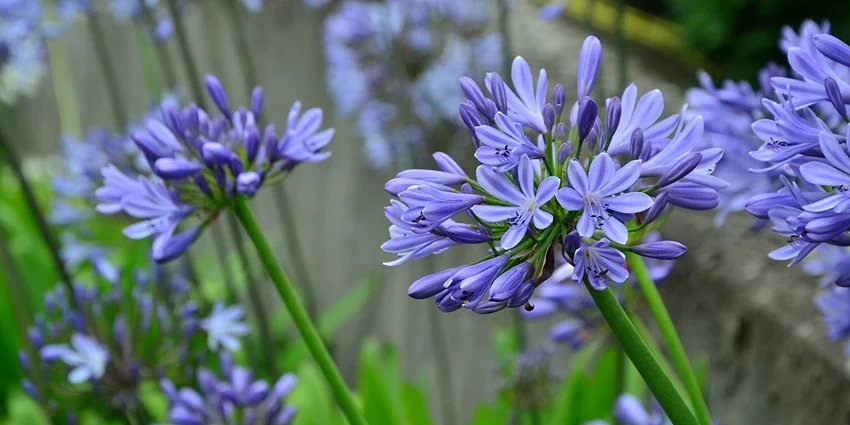All products were chosen independently by our editorial team. This review contains affiliate links and we may receive a commission for purchases made. Please read our affiliates FAQ page to find out more.
Home » How to » Grow Plants » How to grow Phlomis
Phlomis, often known as Jerusalem Sage, is a plant that brings a touch of the Mediterranean to your garden. With its distinctive hooded flowers and drought-tolerant nature, it’s a plant that not only adds beauty but also resilience to your outdoor space. Let’s dive into the world of growing Phlomis, exploring everything from planting to care, ensuring your garden becomes a haven for these stunning plants.
How to grow Phlomis
To grow Phlomis, plant in well-drained soil with full sunlight. Water moderately, allowing the soil to partially dry. These hardy perennials thrive in the UK climate, offering unique whorls of flowers and attractive foliage with minimal care, enhancing the beauty of your garden.
Register for our latest in-depth reviews and product round-ups from the experts.
Enter your email address below to receive our monthly review emails.
By entering your details, you are agreeing to our terms and conditions and privacy policy. You can unsubscribe at any time.
Understanding Phlomis Varieties

Types of Phlomis Plants
Phlomis, a genus with several species, offers a variety of choices for gardeners. Each species has its unique charm, from the yellow-flowered Phlomis fruticosa to the mauve blossoms of Phlomis tuberosa ‘Amazone’.
| Species | Flower Color | Characteristics |
| Phlomis fruticosa | Yellow | Evergreen, grey-green foliage |
| Phlomis russelliana | Pale Yellow | Herbaceous, heart-shaped foliage |
| Phlomis tuberosa ‘Amazone’ | Lavender | Upright purple stems, sage-colored leaves |
| Phlomis italica | Violet | Pale stems and foliage, small flowers |
Planting Phlomis
Selecting the Right Location for Phlomis
Where to Plant: Choose a spot with full sun to partial shade. Phlomis, being a Mediterranean plant, prefers locations that mimic its native environment.
Planting Process for Phlomis
How to Plant:
- Dig a Hole: Ensure it’s twice as wide and the same depth as the pot.
- Check Depth: Place the potted plant in the hole to ensure correct depth.
- Improve Drainage: Add grit if planting in heavy soil.
- Planting: Remove the plant from the pot and place it in the hole.
- Backfill: Use compost and water well.

Caring for Phlomis
Watering and Feeding Phlomis Plants
Watering: Regular watering is key, but be cautious of overwatering. Phlomis does not tolerate ‘wet feet’, especially in winter.
Feeding: Use a general, organic fertilizer every two weeks during the summer months.
Pruning and Maintenance of Phlomis
Pruning: Trim back in spring to maintain shape and encourage healthy growth. Avoid deadheading spent flowers as the seedheads add ornamental value.
Maintenance Tips:
- Soil Check: Ensure soil remains well-drained.
- Monitoring: Keep an eye out for leafhoppers, although they rarely cause significant damage.
Troubleshooting Common Issues
Pest and Disease Management in Phlomis
Phlomis plants are generally robust and disease-free. However, leafhoppers might visit but don’t usually cause harm. Regular monitoring and maintaining healthy growth conditions are key to preventing major pest or disease issues.
Propagation and Cultivation
Propagating Phlomis Plants
Phlomis can be propagated in various ways, depending on the species. Perennial types are best divided in spring, while shrubby varieties can be propagated from cuttings. Some species also allow for seed collection and sowing.
Methods:
- Division: Ideal for perennial Phlomis in spring.
- Cuttings: Suitable for shrubby varieties.
- Seed Collection: Possible for some species in autumn.
Advanced Care for Phlomis
Seasonal Care for Optimal Growth
Spring:
- Pruning: Trim back to maintain shape and encourage new growth.
- Soil Preparation: Ensure well-drained soil, adding grit if necessary.
Summer:
- Watering: Keep the soil moist but not waterlogged.
- Feeding: Apply a balanced, organic fertilizer fortnightly.
Autumn:
- Preparing for Dormancy: Reduce watering as the plant prepares for winter.
- Seed Collection: Collect seeds from mature plants for propagation.
Winter:
- Protection: Ensure good drainage to prevent root rot in wet conditions.

Creating the Perfect Environment
Sunlight and Shade: Full sun to partial shade is ideal for Phlomis, mimicking their native Mediterranean habitat.
Soil Type and pH: Phlomis prefer well-drained soil. They are adaptable to various soil types, including sandy, loam, and chalk, with a wide pH range from acidic to alkaline.
Frequently Asked Questions
Phlomis are relatively pest-resistant. However, watch out for leafhoppers. Regular monitoring and maintaining healthy growth conditions should keep pests at bay.
While Phlomis are Mediterranean plants, many varieties are hardy and can survive in colder climates. Ensure proper drainage and protection from excessive winter wetness.
Absolutely! Phlomis can thrive in containers, provided they have enough space to grow and proper drainage.
Water Phlomis regularly, allowing the soil to dry out slightly between waterings. Overwatering can lead to root rot, especially in winter.
Spring is the ideal time for propagating perennial Phlomis through division. For shrubby varieties, cuttings can be taken in summer.
Eleanor is the quintessential spirit of the British gardener — passionate, dedicated, and endlessly curious about the natural world. Born and raised amidst the verdant landscapes of the Cotswolds, she developed an early love for the outdoors, often spending hours in the family garden with her hands buried in the soil, nurturing every type of plant she could find.








